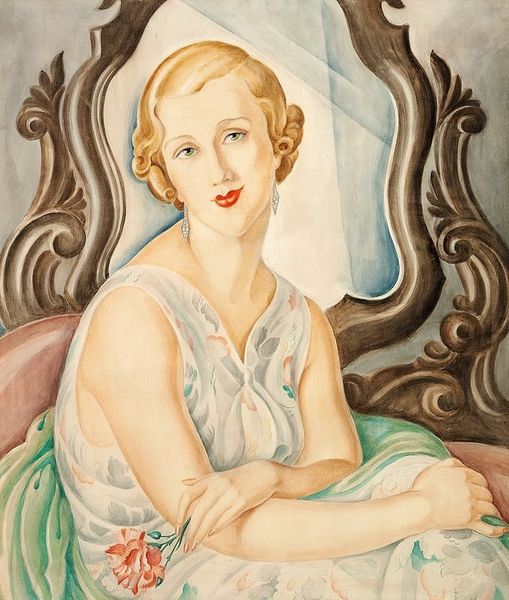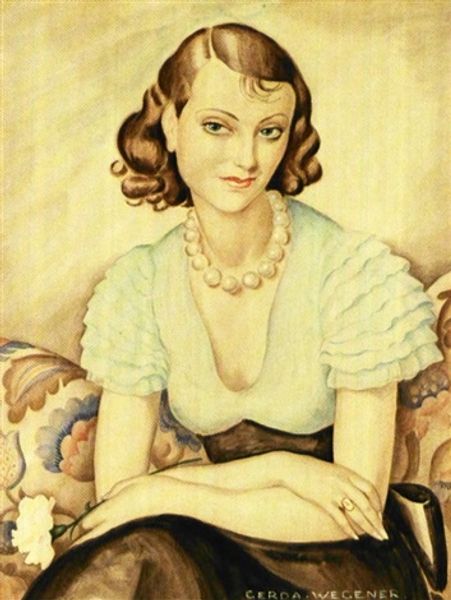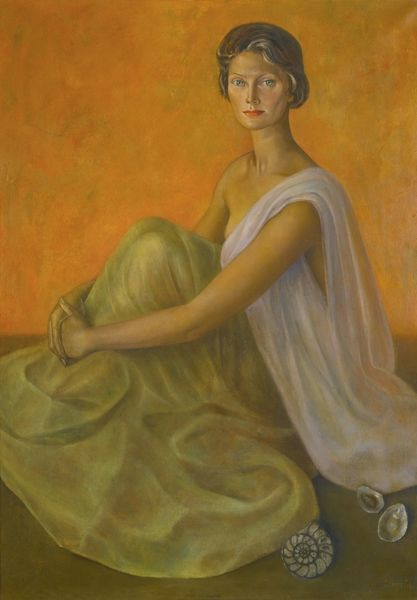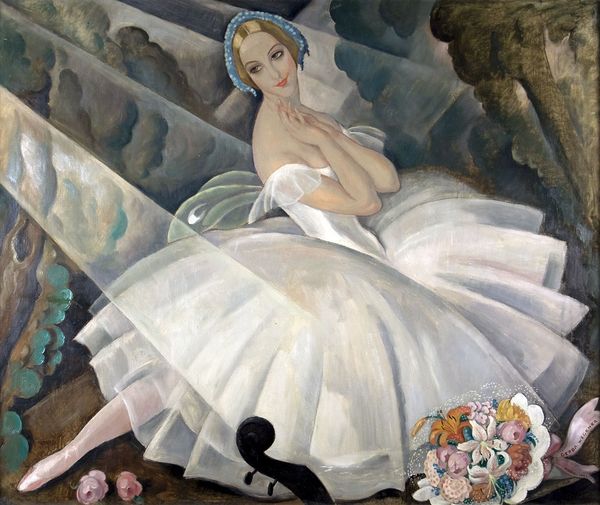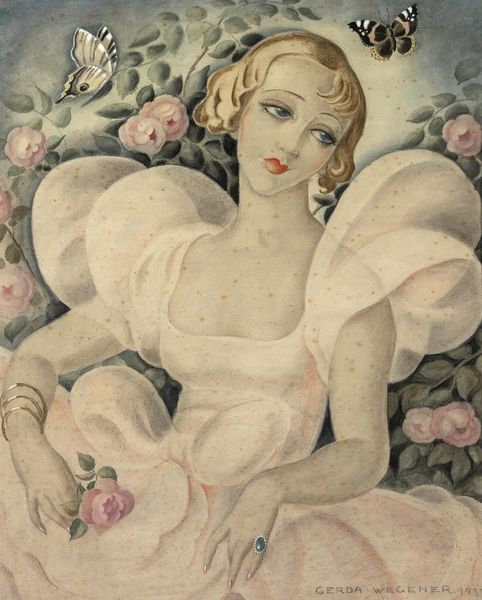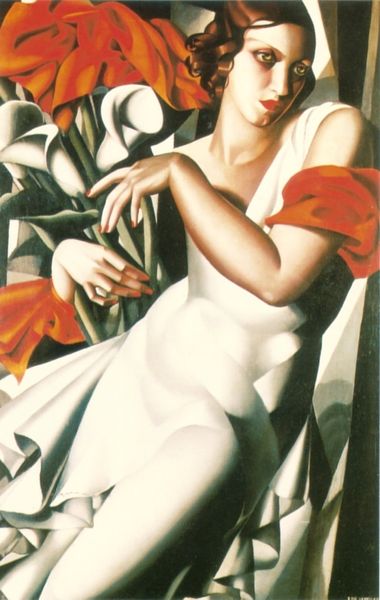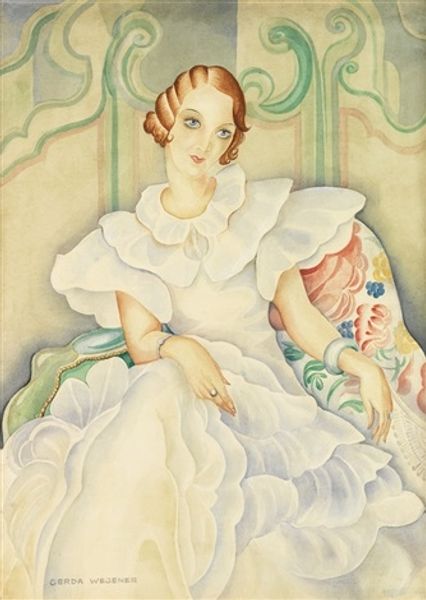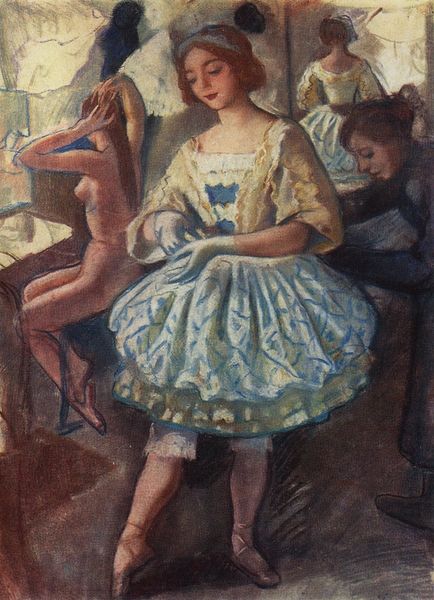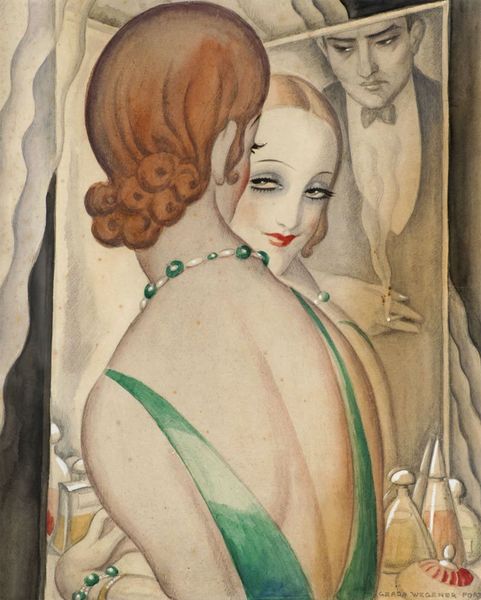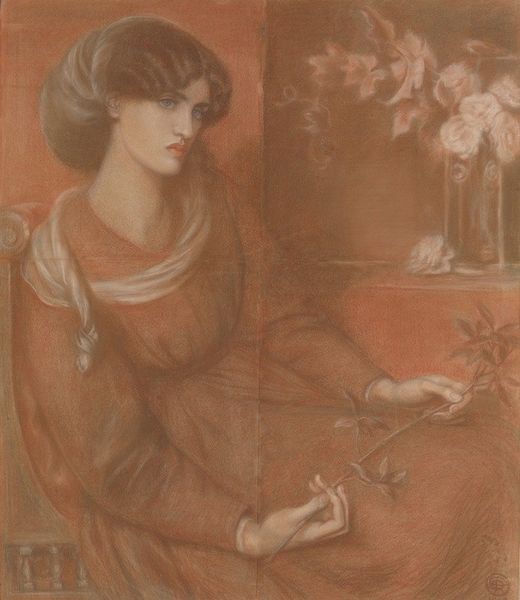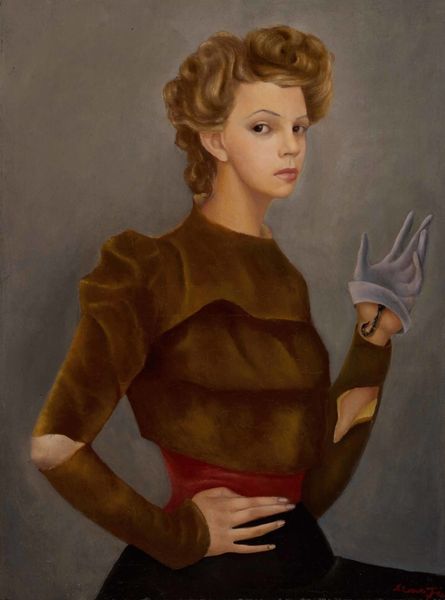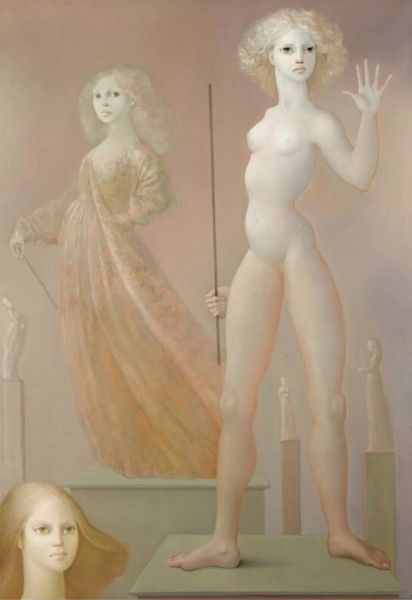
#
possibly oil pastel
#
oil painting
#
acrylic on canvas
#
underpainting
#
painting painterly
#
animal drawing portrait
#
portrait drawing
#
portrait art
#
watercolor
#
fine art portrait
Copyright: Public domain
Editor: So, this is "Eva Heramb," painted by Gerda Wegener in 1934. It appears to be watercolor, maybe with some gouache? There’s a distinct feeling of interwar elegance and melancholy here. What strikes you most when you look at it? Curator: I immediately think about the labor involved in the creation of this image, and the role of consumption in its portrayal. Wegener's precise application of watercolor and possibly gouache demonstrates not only skill but significant hours of labor. Editor: Can you elaborate on how it shows labour? Curator: Note the layering of thin washes, creating depth and form. Each layer required time and careful consideration, reflecting a deliberate process. This isn't about spontaneous expression; it's controlled and meticulously crafted. Furthermore, the subject herself represents a certain level of material consumption; her clothing, jewelry, and makeup signal social status and the means to acquire these goods. Editor: That’s an interesting point. So you’re suggesting Wegener isn't just creating a portrait but also subtly commenting on the consumer culture of her time through her materials and approach? Curator: Precisely. By depicting this woman with such attention to detail – detailing clothes and fabrics with what might be watercolours – Wegener is both participating in and potentially critiquing the very system that allows for such displays of wealth and refined taste. It raises questions about who has the time, resources, and labor to produce and consume these images and material goods. Do you see any areas where the visible application of the materials adds or subtracts from the impact? Editor: That definitely gives me a new lens to view it through, and also shows how complex simple watercolours might be! I hadn’t thought about the act of creating the work in that way before. Curator: Exactly. Considering the means of production brings a whole new layer of understanding.
Comments
No comments
Be the first to comment and join the conversation on the ultimate creative platform.
